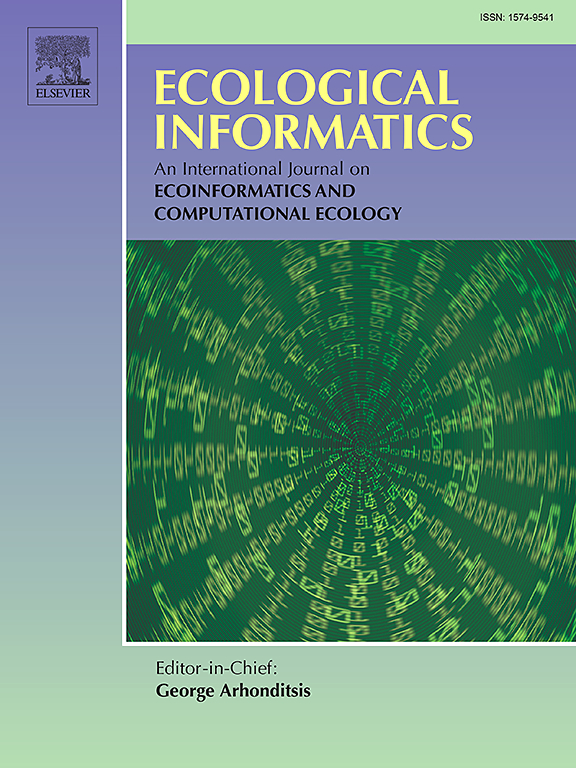Spatiotemporal dynamics of the normalized difference vegetation index and its multidimensional drivers in a rapidly urbanizing coastal city: A case study of Lianyungang, China (2000−2023)
IF 7.3
2区 环境科学与生态学
Q1 ECOLOGY
引用次数: 0
Abstract
Coastal cities, as critical intersections of ecological integrity and human development, face escalating challenges from urbanization and climate change. This study investigates the spatiotemporal dynamics of the Normalized Difference Vegetation Index (NDVI) and its multidimensional drivers in Lianyungang, China (2000–2023), using multi-source remote sensing data and statistical methods such as Sen's slope and the Hurst exponent. Key findings reveal that NDVI exhibited significant growth (0.26 %/yr, p < 0.01), with medium–high coverage areas (NDVI 0.5–0.7) expanding from 36.69 % to 63.29 %. BEAST identified two critical changepoints in 2003 (probability: 21.41 %) and 2013 (probability: 23.96 %), delineating three phases. The early period (2000−2003) exhibited stable growth, with 62.3 % of areas exhibiting positive NDVI trends and widespread sustainability (weak + strong sustainability: 100 %). However, rapid urbanization during 2004–2013 triggered vegetation degradation, as evidenced by negative NDVI trends in 68.6 % of areas and a surge in anti-persistence (strong + weak anti-sustainability: 23.5 %). Post-2013, policy interventions facilitated recovery, with 56.0 % of areas regaining positive NDVI trends and strong sustainability increasing to 17.3 %. Geodetector revealed that anthropogenic drivers dominated NDVI dynamics. Land use remained the strongest factor (q = 0.306 in 2000 and 0.228 in 2020), while nighttime light (NTL) showed the sharpest increase (q = 0.082 to 0.194). Conversely, precipitation's explanatory power declined markedly (q = 0.060 to 0.028). This study provides a scientific basis for ecological management in coastal cities, highlighting the role of policy in balancing urbanization and sustainability.
快速城市化沿海城市归一化植被指数时空动态及其多维驱动因素——以连云港市2000 ~ 2023年为例
沿海城市作为生态完整性与人类发展的重要交叉点,面临着城市化和气候变化带来的日益严峻的挑战。利用多源遥感数据和Sen’s slope、Hurst指数等统计方法,研究了连云港市2000-2023年归一化植被指数(NDVI)的时空变化特征及其多维驱动因素。主要结果显示,NDVI呈显著增长(0.26% /年,p < 0.01),中高覆盖面积(NDVI 0.5 ~ 0.7)从36.69%扩大到63.29%。BEAST在2003年(概率:21.41%)和2013年(概率:23.96%)确定了两个关键的变化点,划分了三个阶段。前期(2000 ~ 2003年)呈现稳定增长,62.3%的地区呈现NDVI正趋势和广泛的可持续性(弱+强可持续性:100%)。然而,2004-2013年期间的快速城市化引发了植被退化,其证据是68.6%的地区NDVI呈负趋势,反持续性(强+弱反可持续性:23.5%)激增。2013年后,政策干预促进了复苏,56.0%的地区恢复了NDVI正趋势,强劲的可持续性增加到17.3%。地理探测器显示,人为驱动因素主导NDVI动态。2000年和2020年分别为0.306和0.228,而夜间光照(NTL)的增加幅度最大(q = 0.082 ~ 0.194)。相反,降水的解释能力显著下降(q = 0.060 ~ 0.028)。该研究为沿海城市生态管理提供了科学依据,突出了政策在平衡城市化与可持续性中的作用。
本文章由计算机程序翻译,如有差异,请以英文原文为准。
求助全文
约1分钟内获得全文
求助全文
来源期刊

Ecological Informatics
环境科学-生态学
CiteScore
8.30
自引率
11.80%
发文量
346
审稿时长
46 days
期刊介绍:
The journal Ecological Informatics is devoted to the publication of high quality, peer-reviewed articles on all aspects of computational ecology, data science and biogeography. The scope of the journal takes into account the data-intensive nature of ecology, the growing capacity of information technology to access, harness and leverage complex data as well as the critical need for informing sustainable management in view of global environmental and climate change.
The nature of the journal is interdisciplinary at the crossover between ecology and informatics. It focuses on novel concepts and techniques for image- and genome-based monitoring and interpretation, sensor- and multimedia-based data acquisition, internet-based data archiving and sharing, data assimilation, modelling and prediction of ecological data.
 求助内容:
求助内容: 应助结果提醒方式:
应助结果提醒方式:


